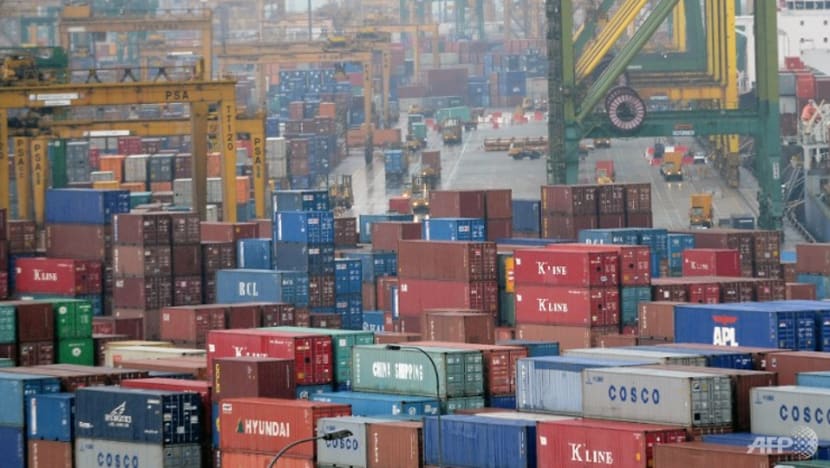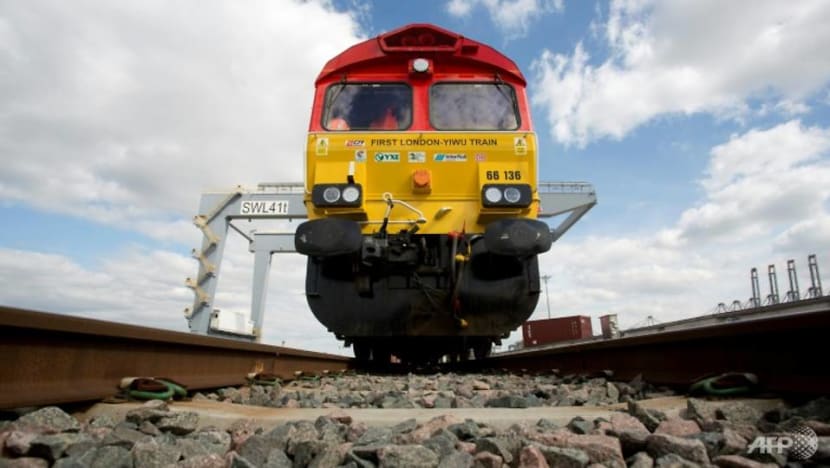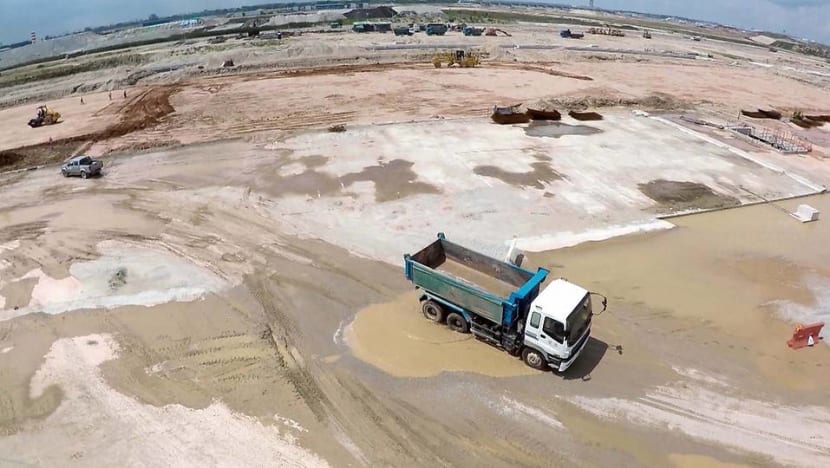commentary Commentary
Commentary: Singapore's Tuas Mega Port a bold investment that will face significant challenges
With Tuas Terminal, the country has upped the ante and made a huge bet on its maritime future, says Asia Pacific Connex’s Andre Wheeler.

Artist impression of Tuas Port. (Image: Maritime and Port Authority of Singapore)
SINGAPORE: Singapore has successfully built itself into a maritime power house through exploiting its strategic location within old trade routes since independence.
Innovation and sound strategic planning by the city-state’s founding leaders helped entrench this position and made the maritime sector an important economic participant in world trade by connecting the country with major trade markets.
Today, the maritime industry accounts for 7 per cent of the country’s GDP and houses 170,000 jobs, a figure that is set to grow since Minister for Manpower Josephine Teo announced that 13,000 more jobs will be created in the aviation and maritime by 2025.
A LEADING MEGA PORT – FASTER, CHEAPER, SMARTER
The country is upping the ante and making a huge bet on its maritime future.
The Tuas Mega Port, currently under construction and with the first phase to be completed in 2021, is a natural extension of Singapore’s strategy to entrench its regional dominance as a leading trans-shipment port.
In details outlined in development documents, it is quite clear that Tuas Megaport is positioning itself to be a leading trans-shipment port that connects and feeds containers to smaller regional ports.
The consolidation of Tuas from existing Keppel, Brani, Tanjong Pagar and Pasir Panjang ports will enable it to handle 65 million twenty-foot equivalent unit (TEUs), a jump from the combined 50 million TEU they collectively manage today.
READ: An Italian port dreams of being the Singapore of the Adriatic Sea, as it awakens to China’s siren call, a commentary

The huge vessel size it can service, including container ships of more than 20,000 TEUs, will reduce costs as large ships arrive and unload containers to be loaded onto smaller vessels for onward delivery elsewhere in the region.
The competitive advantage of this model is that Tuas’ ability to handle huge volumes and receive large container vessels will bring down the cargo’s unit cost.
The adoption of automation and new technology such as driverless vehicles, drones and automated quay cranes will help port operator PSA achieve efficiency and productivity, and help turn vessels over quicker - a strategic advantage of the Tuas megaport.
These will collectively help reduce congestion at the port.
While it still faces challenges from the likes of the emerging ports in Indonesia, Vietnam, Korea, Laos and Malaysia, the water depth and size of the development will make it hard for these ports to compete on the basis of trans-shipment ports.
Ground excavated from the country’s digging of MRT tunnels have helped more than halve the amount of sand needed, reducing the costs of construction of Tuas Terminal.
LOOMING CHALLENGES AS SUPPLY CHAINS ARE RESHAPED
Indeed, tectonic shifts are underway in the shipping sector as trade and supply chains are reshaped by efforts for greater connectivity between China and the world under the Belt and Road Initiative (BRI).
Links between China and Europe are expected to double by 2025, with 70 per cent of cargo in this trade to be transported by sea.

Chinese ports have increased their capacities in recent years, with seven out of 10 of the world’s top container ports in the country.
A growing network of railroads across China to Western Europe has greatly reduced the time taken to move a piece of cargo to 14 to 17 days, a cheaper alternative compared to air freight which takes five or six days.
READ: Global shipping and logistics chains reshaped as China’s Belt and Road dreams take off, a commentary
This is no small threat considering that air freight volumes and yields have been on the decline for some time, while growth in rail cargo have skyrocketed.
Apart from port-to-port logistics to that of first, transport companies are also bearing in mind last-mile considerations, particularly as production methods and systems change.
There is also greater competition in this area as regional countries step up investments in infrastructure and port capabilities. In Indonesia, President Jokowi has ambitions for the country to become a global maritime fulcrum.
READ: Indonesia dreams of becoming a maritime fulcrum but obstacles stand in the way, a commentary
THE GOOD NEWS
The good news is that even as Tuas keeps Singapore as connected as possible to global shipping to stay ahead of the game, the development of Changi Airport Terminal 5 raises the country’s potential to become a key ocean-air freight node, boosting route options to shipping companies that come through Tuas.

This makes sense as the explosion of e-commerce has made delivery speed paramount.
Singapore’s involvement in the Chongqing Connectivity Initiative, which links the land belt and the sea road of China’s BRI to Southeast Asia, also gives Singapore businesses a share in the BRI’s growth.
Where the BRI has been seen as a threat that cannibalises Southeast Asian maritime trade routes, and a competitor to Tuas Terminal, such efforts give Singapore companies dividends in that growth while fueling private sector partnerships that might reap synergies between the two hubs.
About 240 Singapore corporates now have a presence in Chongqing. Chinese companies in turn are beginning to see Singapore as a gateway to ASEAN, according to HSBC.

FUTURE PROSPECTS
Perhaps the greatest challenge to Tuas is not geopolitical or commercial but environmental. Global warming and melting ice caps that open up new trade routes in the Northern Sea and raise sea levels can pose a long-term but existential threat.
READ: Venice flooding is getting worse – and the city’s grand plan won’t save it, a commentary
So far, Singapore authorities have responded well not only by raising the coastline on which Tuas Terminal will be built on to 5m above sea levels but also to get actively involved in the Arctic Council to identify fresh opportunities.
Singapore company Keppel has developed ice-class vessels and rigs to capture new opportunities. But it remains to be seen how the city-state will respond to keep its shipping hub attractive if trade flows begin to shift significantly because of such new routes.
So far Singapore’s strategy to entrench its position as the global node in Asia through the development of Tuas Mega Port seems to have optimistic prospects.
But the country will face greater pressure as other regional ports step up and as Southeast Asian countries get more plugged into the global economy.
Andre Wheeler is chief executive of Asia Pacific Connex, and has 20 years of international business experience in the US and Asia-Pacific.















